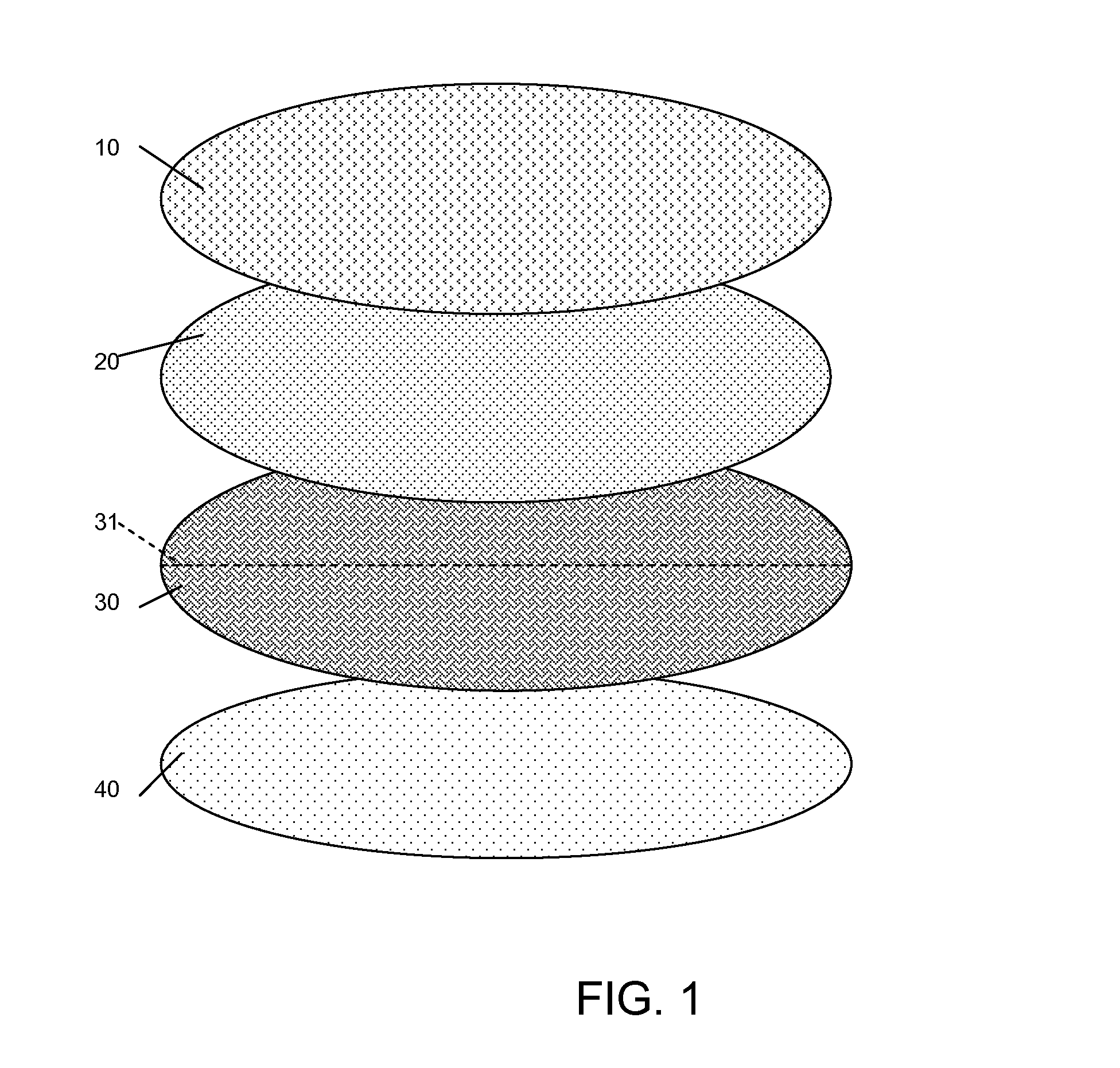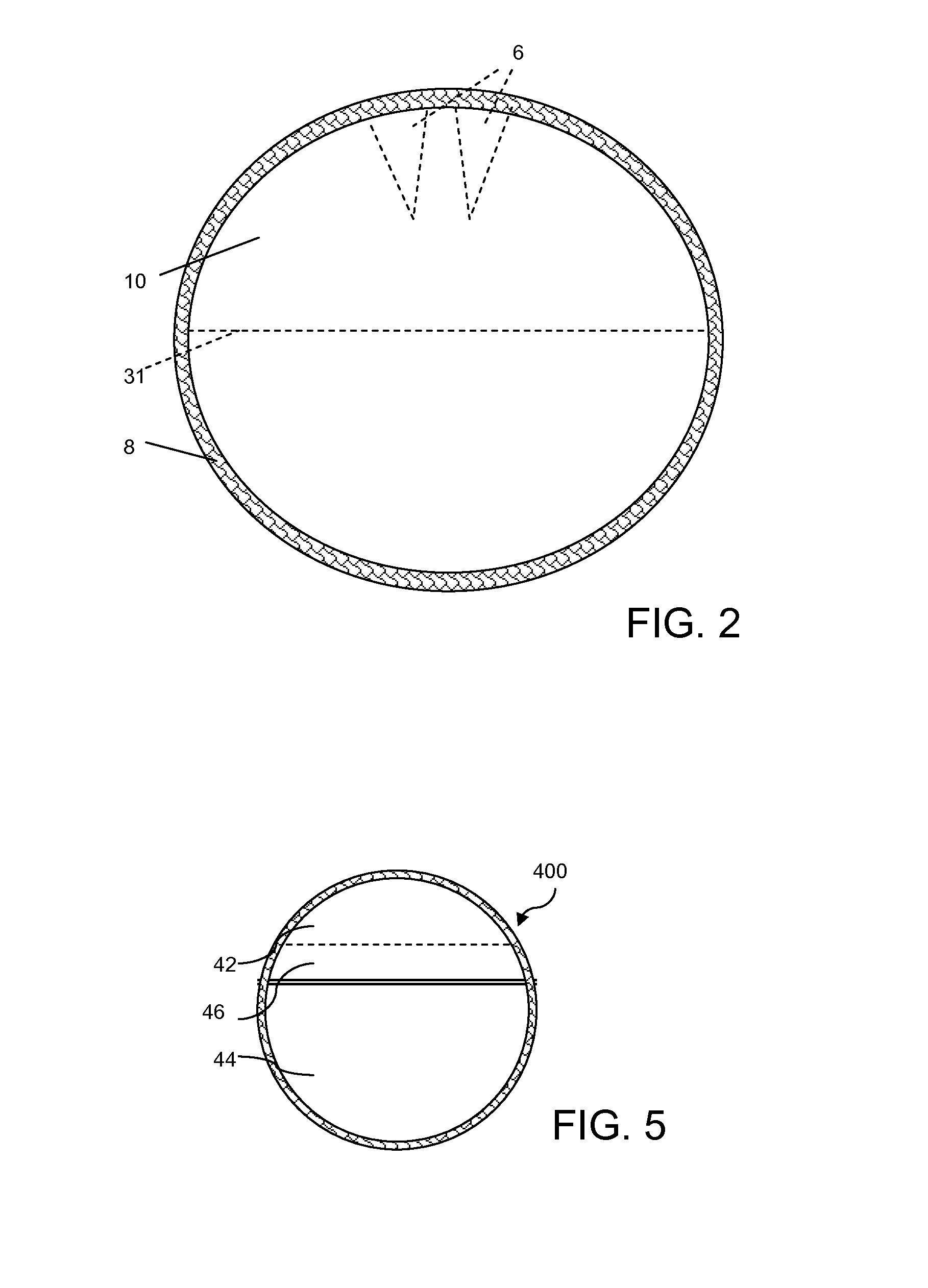Nursing Bra Pad
a bra pad and nursing technology, applied in the field of nursing bra pads, can solve the problems of affecting the healing of traumatized nipples, increasing the risk of nipple infections or breast yeast infections, changing frequently, etc., and achieves optimal absorption, rapid drying, and rapid absorption.
- Summary
- Abstract
- Description
- Claims
- Application Information
AI Technical Summary
Benefits of technology
Problems solved by technology
Method used
Image
Examples
Embodiment Construction
[0017]According to the present invention, a nursing bra pad is provided that is extremely lightweight, has minimal shear for added comfort against the skin, and is easy to launder without degrading comfort or performance.
[0018]For purposes of the following description, the skin contact layer, i.e., the inner layer of the nursing bra pad, is described as the “upper layer” or the “first layer”, while the outer layer that is opposite from the skin contact layer is referred to as the “lower layer” or “fourth layer”. These references are provided for convenience with reference to the orientation of the drawings and are not intended to be limiting or to indicate that the layering must always start with either the inner or outer layers during assembly.
[0019]In an exemplary embodiment, a multi-layer assembly has a rounded shape, which may be circular or oval (elongated), or a many-sided polygon, such as a hexagon, octagon, decagon, etc., which is effectively rounded. The layers include an u...
PUM
 Login to View More
Login to View More Abstract
Description
Claims
Application Information
 Login to View More
Login to View More - R&D
- Intellectual Property
- Life Sciences
- Materials
- Tech Scout
- Unparalleled Data Quality
- Higher Quality Content
- 60% Fewer Hallucinations
Browse by: Latest US Patents, China's latest patents, Technical Efficacy Thesaurus, Application Domain, Technology Topic, Popular Technical Reports.
© 2025 PatSnap. All rights reserved.Legal|Privacy policy|Modern Slavery Act Transparency Statement|Sitemap|About US| Contact US: help@patsnap.com



